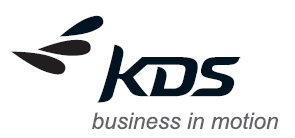The best contract in the world is useless if spend owners are not availing themselves of the hard-won negotiated pricing it contains. Anticipated savings will not hit the bottom line, creating many unhappy stakeholders beyond procurement, including finance and business unit management.
Source: ‘Percentage of Targeted/Negotiated Cost Reductions Lost Due to Maverick Buying’
The Hackett Group: April 2010
As hard as it is to put competitive contracts in place, the larger challenge is in realizing the negotiated benefits. When buyers make purchases off-contract, the result is ‘maverick’ (or non-compliant) spend. This causes higher costs for the company, lost savings for procurement, and lower volumes for suppliers. Despite the negative consequences of maverick spend, most off-contract buying is not intentionally malicious, but procurement still has to find ways to minimize its internal and external effects.
Consequences of Maverick Spend
Despite procurement’s need to place an emphasis on risk management and value generation, savings is still the primary measure of their contribution to the organization. Maverick spend hurts procurement’s performance against this metric in two ways:
- Off-contract spend does not have the same cost advantage as competitively negotiated contract pricing, and the implications go beyond a unit to unit comparison. Even if off-contract pricing appears better at the moment of purchase, there may be rebate implications or payment term advantages to buying on contract – and these are often not apparent to the buyer. Other programs put in place by procurement, such as those that allocate spend to sustainable or minority suppliers, can easily be disrupted by well-intentioned buyers.
- The larger the gap between negotiated and realized savings (also known as ‘leakage’) the less credibility procurement’s savings figures carry with finance. Both procurement and finance know that leakage happens, but the fact that it often goes unmeasured creates a problem for any claims of savings procurement may make. “Finance organizations are asking for more tangible proof that promised savings and other benefits are actually being realized, while simultaneously facing increasing legal and regulatory compliance issues and reporting requirements themselves.” (Michael Eckstut. ‘Contract Compliance -- The Hidden Underbelly of Sourcing Under-performance’ Spend Matters: 19 April 2012.)
Since procurement is often the primary face of the organization to suppliers, the extent to which maverick spend affects third parties also hinders procurement’s ability to meet objectives. Supplier prices, and therefore margins, are based on the projected volume in the RFP/RFQ. Lower than expected volume may prevent suppliers from achieving a sufficient margin and being able to honor negotiated pricing for the term of the contract. Even if there is no short-term impact, the perception that volume is overestimated may cause future proposed rates to rise.
Addressing the Causes of Maverick Spend
 The first step in being able to address maverick spend is recognizing the cause. Knowingly made maverick purchases are likely to be based on existing supplier relationships, the belief that the buyer can secure a ‘cheaper’ option elsewhere, or unique product/service requirements. All of these require a relationship-driven reaction from procurement. While this approach is an opportunity to improve working relationships with internal stakeholders, and possibly even add sourcing projects to the pipeline, it is time consuming for procurement to commit resources to reach out to these individuals.
The first step in being able to address maverick spend is recognizing the cause. Knowingly made maverick purchases are likely to be based on existing supplier relationships, the belief that the buyer can secure a ‘cheaper’ option elsewhere, or unique product/service requirements. All of these require a relationship-driven reaction from procurement. While this approach is an opportunity to improve working relationships with internal stakeholders, and possibly even add sourcing projects to the pipeline, it is time consuming for procurement to commit resources to reach out to these individuals.
Most maverick spend is the result of simple communication issues with those making purchases in the category. In a study conducted by KDS in July 2012, the most commonly cited reason for non-compliance was 'lack of visibility into policy and process‘. Much of this unintentional maverick spend can be handled through automated solutions, such as those offered by KDS, that notify buyers at the moment of purchase that they are visiting a site that competes with one where contracted pricing has been put in place (like Staples vs. Office Depot or Kayak.com vs. a travel booking site).
Implementing a compliance solution allows procurement to prevent maverick spend before it takes place without a direct resource investment on a case by case basis. “The ability to undertake spend analysis and opportunity assessments with accuracy and clarity poses a significant challenge without control of and visibility into your maverick spend. Spend outside of the preferred procurement process or systems will have a large impact on your ability to increase spend economies of scale, increase process and procurement efficiencies and to have the information necessary for informed contract negotiation. KDS has confronted this issue and can provide the tool needed for procurement departments to successfully address this challenge,” said Oliver Quayle, KDS’ VP of Product Strategy.
The repercussions of unchecked maverick spend transcend industries and categories. Proactive spend managers will need to take action if they are to capture the potential benefits of well-negotiated contracts. If you are interested in learning more about the options available to regain control of your maverick spend, attend this coming webinar, hosted by KDS:
Track and Control Maverick Spend
Date: 30th August
Time: 10:30am B.S.T.
Duration: 30 Minutes
Join us on August 30th to learn how to successfully track and control 100% of your organisation's spend. KDS Maverick will ensure that you are no longer losing out on corporate discounts, that you are meeting supplier commitments and ultimately no longer paying far more for inferior products and services.